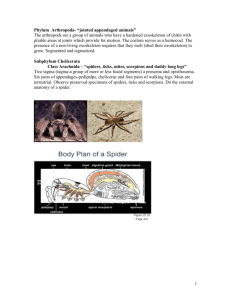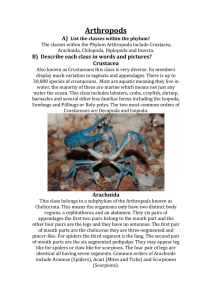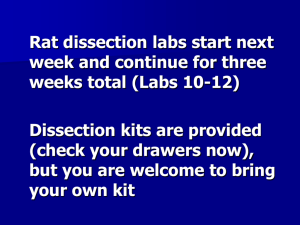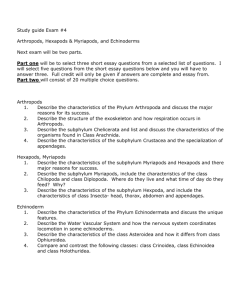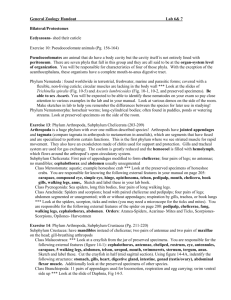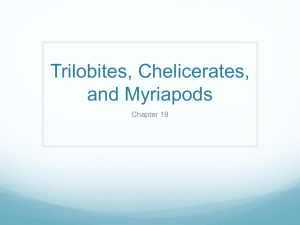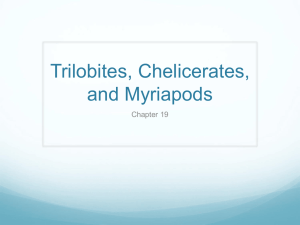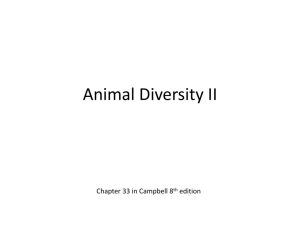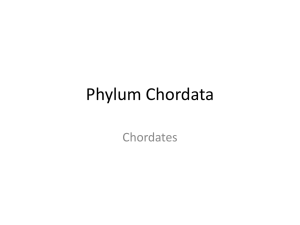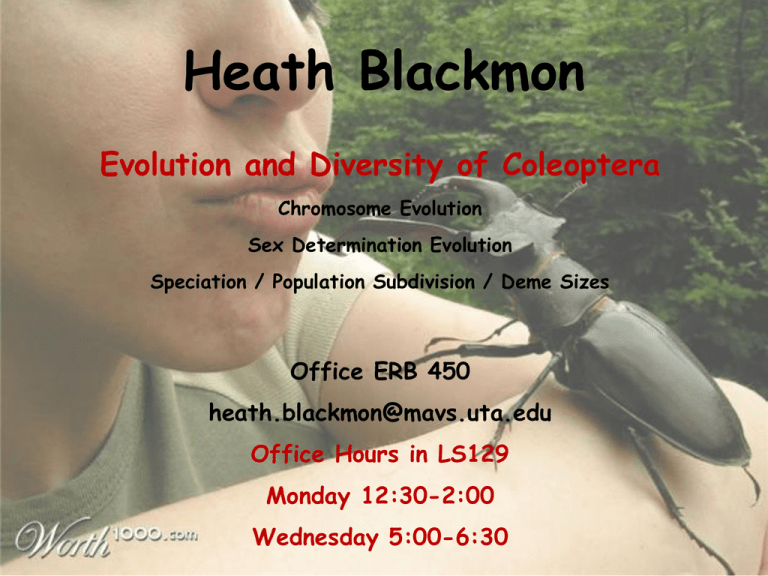
Heath Blackmon
Evolution and Diversity of Coleoptera
Chromosome Evolution
Sex Determination Evolution
Speciation / Population Subdivision / Deme Sizes
Office ERB 450
heath.blackmon@mavs.uta.edu
Office Hours in LS129
Monday 12:30-2:00
Wednesday 5:00-6:30
Entomology Lab
Week 2
Arthropods - Hexapods = ?
Arthropods about 550,000,000 Y.A.
Estimated at 4-6 million species
Diversity of Life
Animal Diversity
Classification
Domain
Kingdom
Phylum
Class
Order
Family
Genus
Species
Classification
Domain
Kingdom
Phylum
Class
Order
Family
all 50 specimens
25 of your specimens
Genus
Species
Unusual or Common Classes
* Subphylum Trilobitomorpha
o Trilobita – trilobites (extinct) 20,000 species 500-250 mya
* Subphylum Chelicerata
o Arachnida – spiders, scorpions, etc.
o Xiphosura – horseshoe crabs, etc.
o Pycnogonida – sea spiders
o Eurypterida – sea scorpions (extinct)
* Subphylum Myriapoda
o Chilopoda – centipedes
o Diplopoda – millipedes
o Pauropoda
o Symphyla
* Subphylum Hexapoda
o Insecta – insects
o Entognatha
* Subphylum Crustacea
o Branchiopoda – brine shrimp etc.
o Remipedia
o Cephalocarida – horseshoe shrimp
o Maxillopoda – barnacles, fish lice, etc.
o Ostracoda – seed shrimp
o Malacostraca – lobsters, crabs, shrimp, etc.
Common Classes
Insecta
Chilopoda
Diplopoda
Arachnida*
Crustacea
Class Insecta
Skip till next week.
Class Chilopoda - Centipede
Chilo - lip
poda - foot
- poison jaws are modified feet
- each segment has one pair of legs
- last pair of legs directed back and often larger
- dorsoventrally flattened
- under bark on dead trees, under rocks.
Class Diplopoda - Millipedes
Diplo - 2
poda - feet
- 2 pairs of legs per segment
- Cylindrical body or slightly fattened
- Enlarged segment behind head
- Feed on decaying vegetation / found in leaf litter, rotten
wood, under boards
- Often curl up when threatened
SubPhylum Crustaceans
Crustace - hard shelled
- 2 pairs of antennae (1 often rudimentary)
- Breathing by gills
- Head fused to thorax
- We will focus on Malacostraca
Book Lungs
Orders of the Subclass Malacostraca
Amphipoda: laterally compressed - 7 segments
with legs - on beaches
Isopoda: dorsoventrally compressed - 7 segments
with legs - aquatic and terrestrial
Decapoda: carapace covers the thorax - 5 pairs of
leg like appendages often 1st pair are claw like
Class Arachnida
More than just spiders
- Usually have 4 pairs of legs
- 2 segments cephalathorax and
opisthosoma
- No antenna but do have pedipalps
Arachnida - Orders
Araneida
Acari
Scorpionida
Palpigrada
Thelyphonida
Schizomida
Pseudoscorpionida
Amblypygida
Phalangida
Ricinuleida
Solpugida
Collecting and Preserving
Arachnids
UV light / Tick Drag / Headlamp / Sweeping / Pitfall traps
/ Beating / Berlese / Mud Daubers
-Collect in 70-90% alcohol
Replace if it discolors 24-48 hours
-Some spiders with large abdomens will do best if
injected with alcohol as well
-Do not dry mount - without eviscerating abdomen
and filling with cotton
Collecting and Preserving
Spider webs
-Black spray paint
-Spray adhesive
-2 sheets of glass or
-Riker mount and white poster board
1 Spray the web with black paint and then a small amount of
adhesive.
2 Line up your glass or poster board parallel with the web and
push forward into it. Once you are pressed against the web cut the
lines that are supporting the web.
3 The web should be mounted on your glass or poster board. You
can protect it by applying the other sheet of glass or placing in a
riker mount
4 If you use glass it is best to tape around the outer edge to hold
the pieces in place.
Collecting and Preserving
Chilopoda and Diplopoda
-Centipedes can be directly collected and preserved in
alcohol 70-95%
-Millipedes are very difficult to keep from falling apart.
The best results are usually achieved when the specimen
is injected with strong alcohol or even formaldehyde
-Both groups are encountered most often in under and
around decaying logs and other vegetation. Millipedes
will occasionally appear in mass after summer rains in
the southwest.
Collecting and Preserving
Crustaceans
Dip Net / Kick Net / Seines / Dredges / Sieves / Plankton Net
-Sort material in a white pan or tray
-Collect in 70-95% alcohol
Replace if it discolors 24-48 hours
-Some isopoda and decapoda can be dry mounted but this is
normally only done for display specimens
or specimens that are extremely large
Today
Key 5 specimens to class and order and
two specimen to family
Next Week
Hexapods

